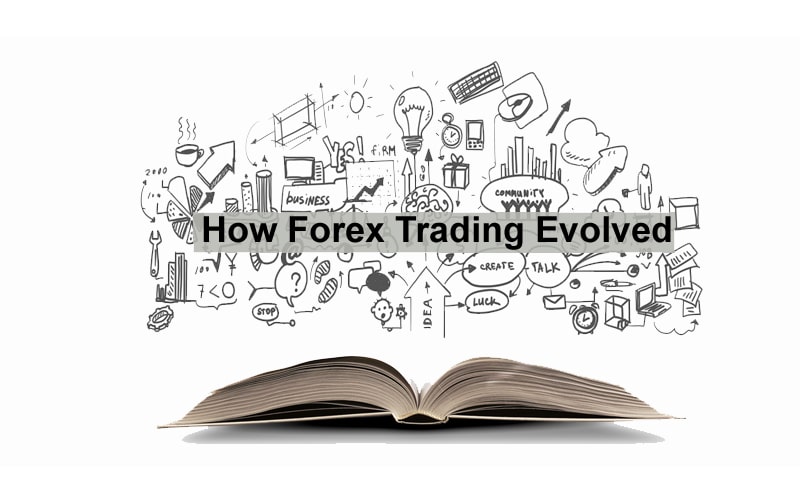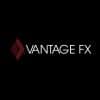Before entering the world of forex trading, you need to know the evolution of trading. By doing this, you can fully understand the evolution of the global monetary system, the history of currency markets and currency trading, and different types of the algorithm that operate in currency markets.

A Short History of Currency Trading
The business of forex trading has evolved drastically over the years. The main reason behind this is the changes and reshaping of the landscape by technology and regulation many times over. As explained in the following sections, there are four primary eras in the history of forex trading that you must know about. The starting and ending dates of the eras are approximate.
The Telephone Forex Trading (1971 to 1981)
During the 1970s and 1980s, traders used to conduct currency trading primarily over telephone lines and telex machines. Primarily in New York and London, a small group of bank traders executed transactions for high net worth individuals and multinational corporations. Banks traded with each other directly. They used to ask prices through telephone and telex. On the telephone, they executed trades using brokers.
Currency features launched on May 16, 1972, when the IMM started to trade seven currency futures contracts. Thus, non-bank players got a chance to get involved in the currency markets. You should know that the trading market was different in the 1970s and 1980s than today. In those days, there were restrictions in trading for high net worth individuals and sophisticated speculators. They could not take part in futures trading.
The Direct Dealing Forex Trading (1981 to 1992)
Reuters launched a computerized dealing monitor service in 1981. It used to streamline the forex trading process. Traders used human brokers or voice brokers for the majority of transactions generally. However, sometimes they also called other banks to request a two-way price. These callouts resulted in one bank calling more than thirty other banks at the same time for two way currency rates.
It allowed banks breaking large trades in smaller trades. Thus, they could avoid warehousing large deals internally and offload risks to their competitors. For example, assume that a client gave 200 million USDJPY to UBS. Now, UBS could call ten banks to give 20 million USD JPY to each one. In exchange, USB committed to showing a price to those banks when they had large deals to hedge. However, voice brokers still facilitated the majority of interbank forex transactions. So, they still held an important role during that time.
The Electronic Forex (1992 to 2001)
Reuters launched Dealing 2000 in 1992 which was an online trading and matching platform. It allowed banks to show bids and offers (buying and selling interest) electronically to other banks. During the same time, EBS or Electronic Brokerage Services that is now a division of Nex launched a similar product. Thus, the electronic era of forex trading began. At first, traders were comfortable with human counterparts and they also valued the information flow from these forex brokers which made the adoption of electronic brokers slow. However, over time, the electronic systems showed their potential in superior pricing and execution speed compared to the services that the voice brokers offered. So, they gained market share relentlessly.
By the late 1990s, EBS dominated USDJPY and EURUSD while Reuters ruled the market shares of USDCAD, AUDUSD, and other less liquid currencies. There were more than one thousand human voice brokers universally in the 1980s, but only fifty or sixty remained in the electronic era. The electronic platforms increased transparency and liquidity at a steady pace. As a result, there was no need for banks to trade directly anymore and the direct market between banks closed down.
The Era of Algorithms in Forex (2001 to Present)
Hedge funds developed algorithms in the early 2000s for trading electronically on Reuters and EBS. At first, the algorithms were specialised and they performed arbitrage between platforms mostly. For instance, if the futures market displayed a 31 bid in EURUSD and EBS displayed a 30 offer, the algorithms would hit the 31 bid and pay the 30 offer for capturing a risk-free profit. Over time, the algorithms became a lot more sophisticated. Now, then run all types of strategies. At present, algorithms deal with more volume than humans in the forex market. Estimates may vary but the algorithm versus human share of forex trading volumes floats around 60/40.
The retail forex trading began during the late 1990s and early 2000s. With superior computing power, regulatory changes, and the invention of the internet, individuals with limited capital were also able to trade forex using leverage. This kind of trading now holds a small yet important part of the forex market, especially in Japan. The competition among retail forex brokers has resulted in better software, tighter spreads, and an even playing field for retail traders. Leverage of up to 100X was available once. However, when the SNB dropped the 1.20 floor in EURCHF, it wiped out many accounts in January 2015. Now, leverage is much lower.
The Major Algorithms Ruling Today’s Forex Market Are:
- Arbitrage: Systems profit from disparities in price between venues. If EBS is willing to sell at 49 and Citibank is willing to buy at 50, the arbitrage algorithms will do both sides and capture a risk-free profit.
- Data trading: Algorithms read the economic release data and rely on the pre-programmed estimates of the movements of the market to trade instantaneously.
- Market trading: Algorithms display a bid and an offer in the market to earn a spread and profit from the intraday noise.
- Gamma Trading: A system buys options and then electronically trades the gamma to generate income over the option’s cost.
- Correlation: Algorithms trade forex according to other market movements. For example, when oil rallies, an algorithm can buy Canadian dollars because Canada is a major exporter of crude.
- Trend following: These systems look for intraday trends and purchase pullbacks to a moving average or purchase breakouts. The idea is earning benefits from trend lines in specific markets.
- Mean reversions: The opposite of trend following, algorithms buy dips and sell rallies in non-trending currencies such as USDCAD to capture mean reversion.








Leave a Reply